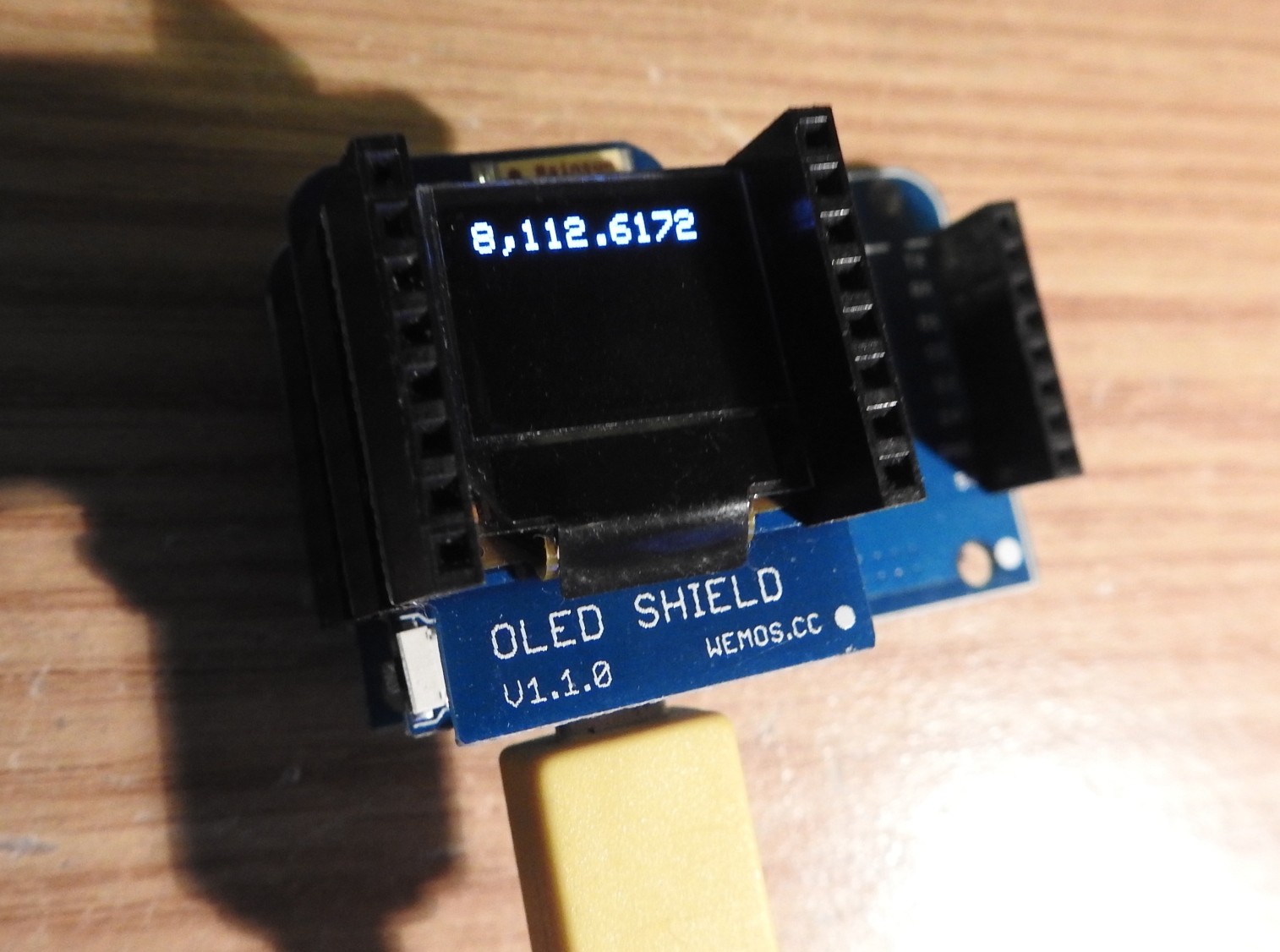In this example we will display the price in USD of 1 bitcoin, the data is taken from coindesk’s API and displayed on an oled display.
This is similar to our previous examples, you do not need to use a Wemos mini or the OLED shield below but this makes the project easier to build
Here is the oled shield for the Wemos mini
Here is the wemos mini
 Code
Code
#include <ESP8266WiFi.h>
#include <Wire.h>
#include <SFE_MicroOLED.h>
#include <ArduinoJson.h>
const char* ssid = "iainhendry";
const char* pass = "iain061271";
#define PIN_RESET 255 //
#define DC_JUMPER 0 // I2C Addres: 0 - 0x3C, 1 - 0x3D
String id;
String value;
String json;
MicroOLED oled(PIN_RESET, DC_JUMPER); // I2C Example
WiFiClient client;
// delay between updates
const unsigned long postingInterval = 60L * 1000L;
unsigned long lastConnectionTime = 0;
void setup()
{
delay(100);
Serial.begin(115200);
Serial.println();
Serial.println();
Serial.print("Connecting to ");
Serial.println(ssid);
WiFi.begin(ssid, pass);
while (WiFi.status() != WL_CONNECTED)
{
delay(500);
Serial.print(".");
}
Serial.println("");
Serial.println("WiFi connected");
Serial.println("IP address: ");
Serial.println(WiFi.localIP());
Serial.print("Connecting to ");
oled.begin();
oled.clear(ALL);
oled.setCursor(0,0);
oled.display();
oled.clear(PAGE);
oled.clear(ALL);
oled.print("Bitcoin price");
oled.setCursor(0,1);
oled.print("loading..");
oled.display(); // Display what's in the buffer (splashscreen)
delay(50);
}
int check_connect = 0;
void httpRequest()
{
client.stop();
// if there's a successful connection:
if (client.connect("api.coindesk.com", 80))
{
Serial.println("connecting...");
client.println("GET /v1/bpi/currentprice.json HTTP/1.1");
client.println("Host: api.coindesk.com");
client.println("User-Agent: ESP8266/1.1");
client.println("Connection: close");
client.println();
lastConnectionTime = millis();
}
else
{
// if you couldn't make a connection:
Serial.println("connection failed");
}
}
void loop()
{
int cnt;
if (cnt++ == 10000)
{
cnt = 0;
if (check_connect++ == 50)
{
check_connect = 0;
if (WiFi.status() != WL_CONNECTED)
{
}
}
}
if (millis() - lastConnectionTime > postingInterval)
{
httpRequest();
unsigned int i = 0; //timeout counter
int n = 1; // char counter
char json[500] ="{";
while (!client.find("\"USD\":{")){}
while (i<20000)
{
if (client.available())
{
char c = client.read();
json[n]=c;
if (c=='}') break;
n++;
i=0;
}
i++;
}
StaticJsonBuffer<500> jsonBuffer;
JsonObject& root = jsonBuffer.parseObject(json);
String newjson = root["code"];
String value = root["rate"];
id = newjson.substring(9,12);
// value = newjson.substring(41,51);
oled.display();
oled.clear(PAGE); // Clear the display's internal memory
oled.clear(ALL); // Clear the library's display buffer
oled.setCursor(0,1);
oled.print(value);
oled.display();
id="";
value="";
}
}
testing
You should see something like this on the oled display

Links
Here are some of the products I used
by hotcoin.net




Looks like there is a memory leak somewhere as the sketch stops after about 95 – 100 iterations.